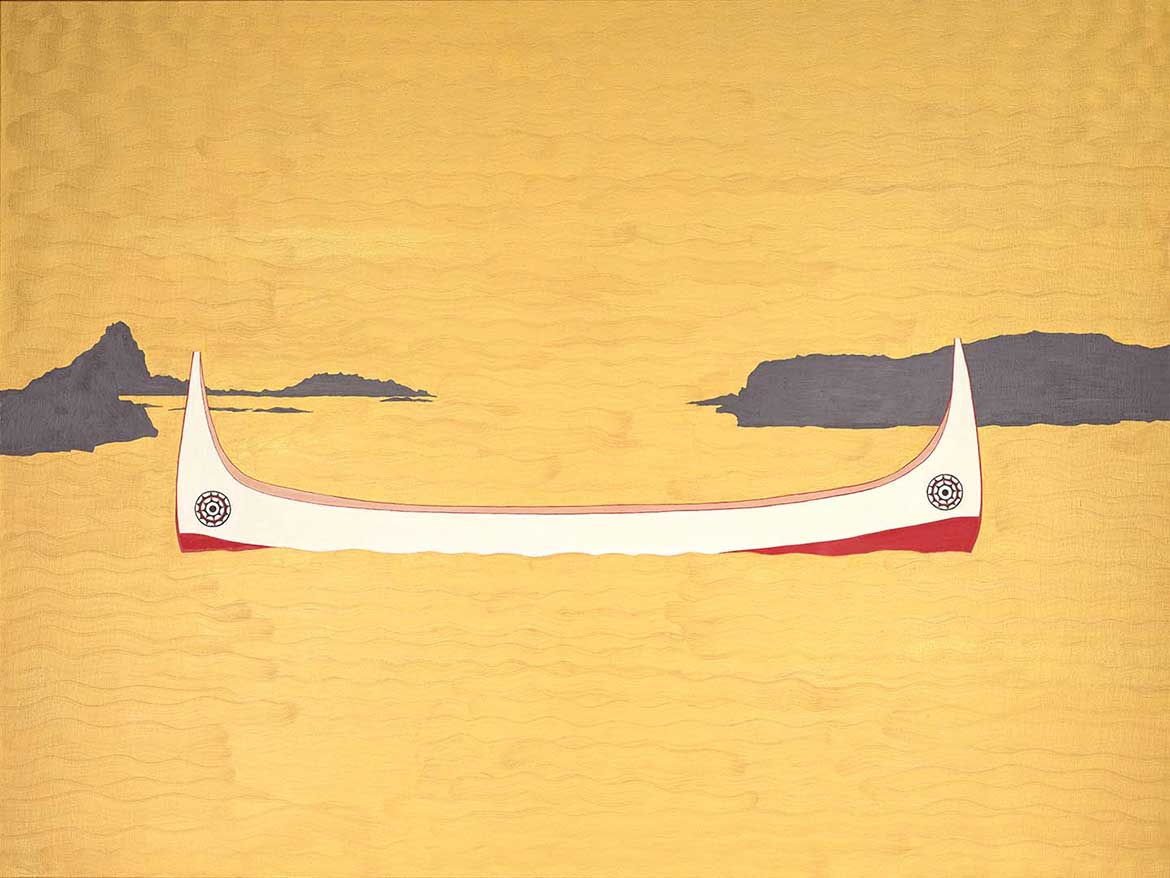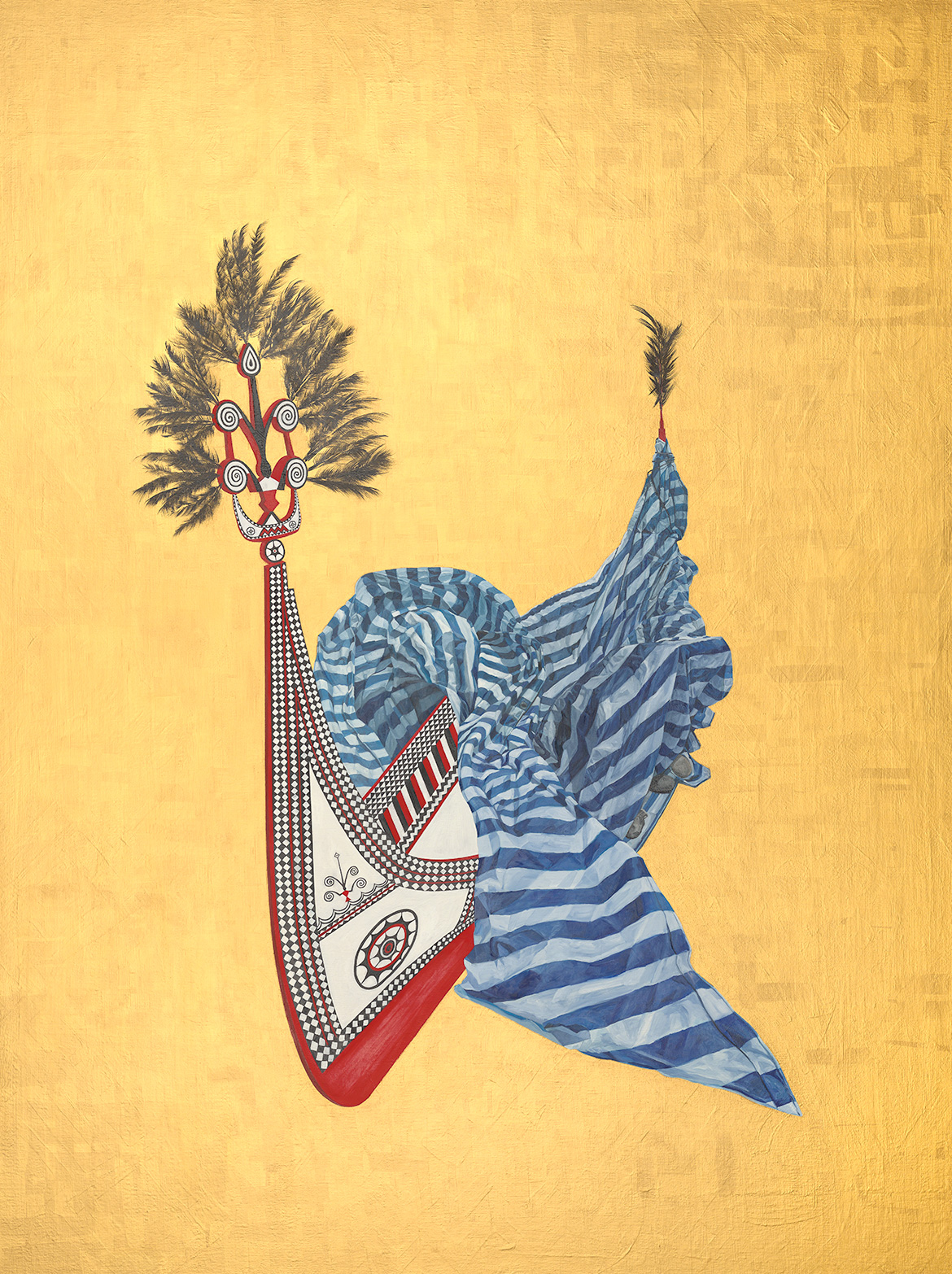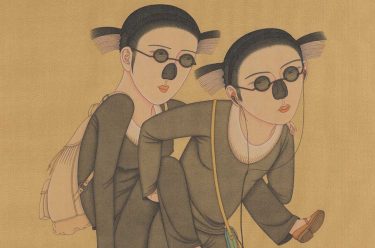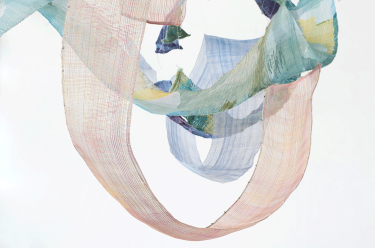Idas Losin’s paintings are characterised by their fine brushwork and stark composition, typically foregrounding their subject matter on a flat, open pictorial plane. A Taiwanese artist of Truku and Atayal heritage, her works range from expressions of aboriginal identity — incorporating tattoos, woven patterns and other cultural objects — to dreamlike renderings of island settings and seascapes. Losin’s tatara fishing canoes are of the Tao people and from their home of Lanyu (Orchid Island), off the south-east coast of Taiwan.
Waiting to sail 2016

With limited opportunities for aboriginal contemporary artists in Taiwan until the late 2000s,1 Losin came to painting relatively late. Prior to her work as an artist, she spent several years working on documentary films of Taiwanese tribes, focusing on the stories of elders. When she saw ‘The Native Born: Objects and Representations from Ramingining, Arnhem Land’ at Taipei’s Museum of Contemporary Art in 2003, Losin was inspired to travel to Australia.2 With further exposure to Australian Indigenous art, she had the opportunity to reflect on the status of Taiwan’s aboriginal people, and became determined to explore her own heritage and tell the stories of her community through painting.
Following a joint residency with leading Māori artists George Nuku and Tracey Tawhiao, Losin also took an interest in the notion of Austronesian migration and the potential for dialogue with cultures from South-East Asia, Oceania and Madagascar, which linguistic and anthropological evidence links to Taiwan’s aboriginal tribes. Curiosity has since driven her to travel further to study the artistic expression of indigenous and First Nation perspectives in North America and around the Pacific, including Rapa Nui (Easter Island), Hawai’i, Guam and Aotearoa New Zealand, in what she describes as her Island Hopping Art Project. Losin draws creative energy from the diversity of indigenous Asian and Pacific cultures, their harmonious mixing of old and new, and the ways in which they negotiate the influence of Westernisation, while maintaining local culture.
Floating 2017

Tatara 2018

Losin’s ‘Orchid Island’ paintings reflect the significance of fishing in Tao life, centring on the form of the tatara at rest, preparing to launch, and afloat in calm waters. These symmetrical vessels, with their distinctively upturned bow and stern, are typically decorated with carved and painted geometric emblems representing the sea, ancestral beings and the flying fish that play a major role in ceremonial cycles. With eyes at both ends, the boats are regarded as extensions of the human body, linking heaven and earth. Other paintings show topographic renderings of Jimagaod (Lesser Orchid Island), an uninhabited volcanic islet to the island’s south. In addition to their subject matter, Losin’s works are notable for their painterly range, the artist varying her approach between photorealism and flatter, stylised representations. At times, she playfully exploits the texture of her brushstrokes, as in the alternating golden waves that form the ground of the tatara in Floating 2017.
Idas Losin describes her engagement with Austronesia as a learning process, one that offers new perspectives on creativity and identity. For Losin, participation in this broader cultural community forges a deeper personal connection with her home of Taiwan.
Reuben Keehan is Curator, Contemporary Asian Art. QAGOMA
Endnotes
1 Though two indigenous artists were included in the 1996 Taipei Biennial, the words ‘aboriginal’ and ‘contemporary’ were not used together until 1999, and dedicated collection and exhibition programs did not exist until 2006, when the Kaohsiung Museum of Fine Arts initiated its significant Austronesian art program. On the role of Austronesian art in Taiwanese cultural policy, see Sophie McIntyre, ‘Navigating “Austronesia”: Contemporary indigenous art from Taiwan and the Pacific’, Art Monthly, no.232, August 2010, pp.45–8.
2 The exhibition was a touring project of the Museum of Contemporary Art, Sydney, curated by Djon Mundine
Artists & Artworks: Explore Idas Losin the QAGOMA Collection
Featured image detail: Idas Losin Waiting to sail 2016
#QAGOMA


